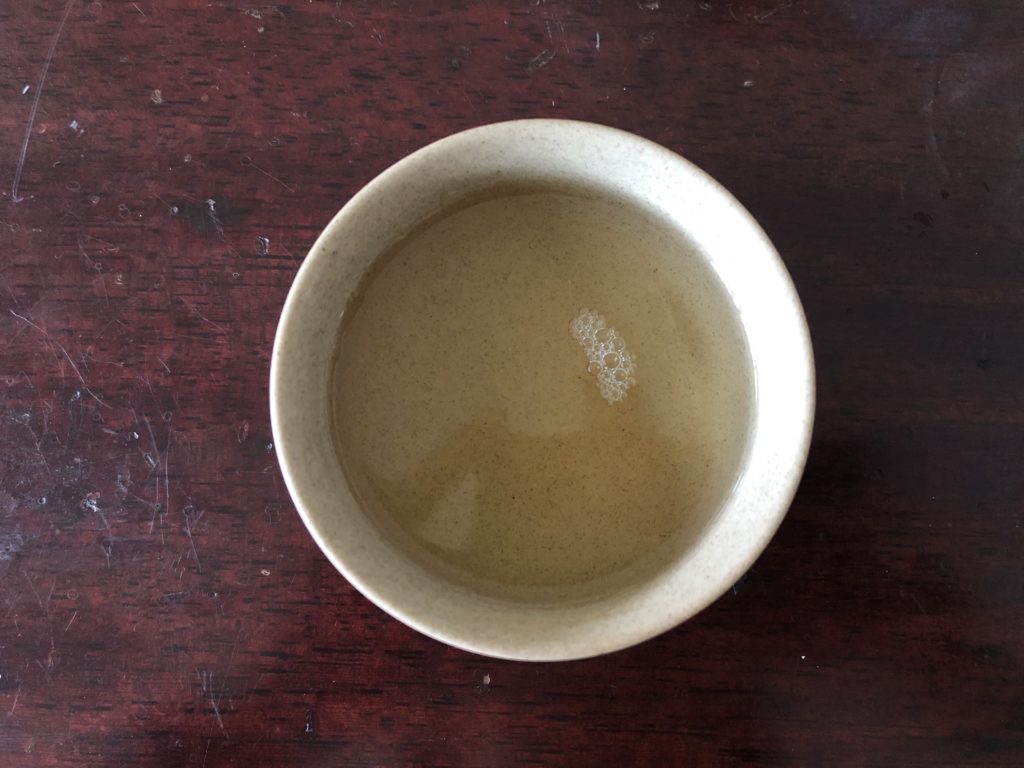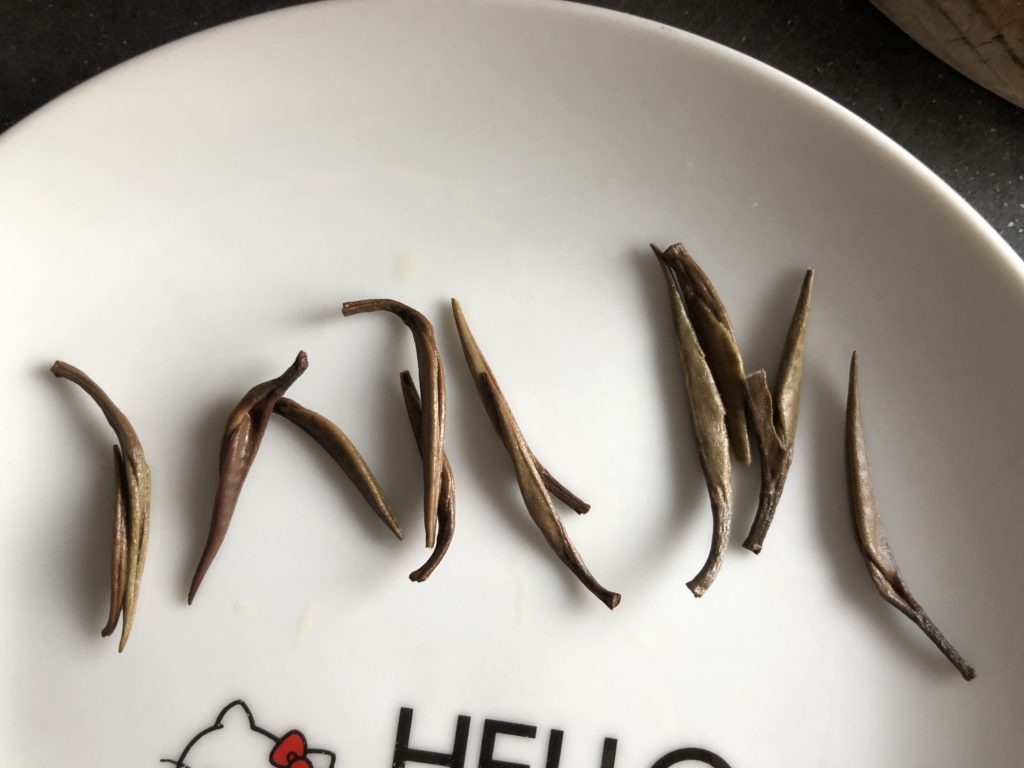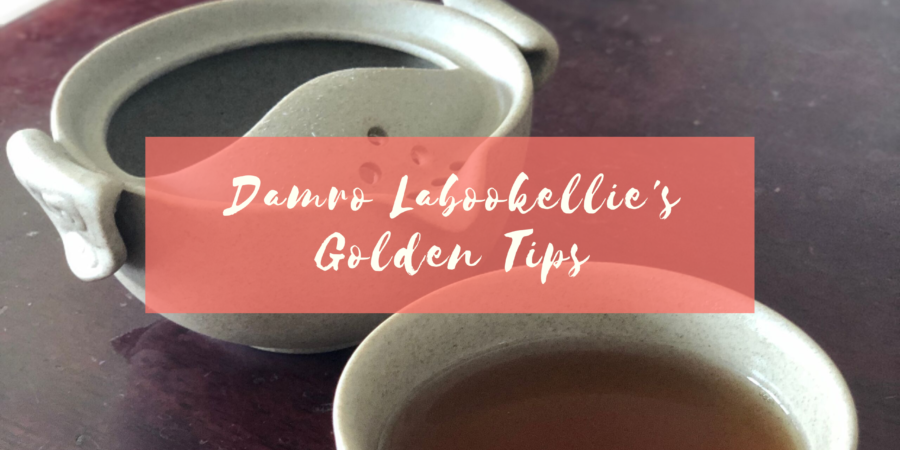The more tea I drink, the more I realise that there are gaps in my tea tasting experience. I’ve always thought of Sri Lanka as a place for black tea (and more as a base for flavoured teas than single origin teas) but this white tea changed my mind about it.

Golden Tips was a gift from a friend – she visited the Damro Kabookellie tea estate [1] and very kindly thought of me! I was super touched to get it and was pretty excited to try it after reading the description:
“DAMRO Labookellie Golden Tips are made from exclusive tea buds which are handpicked from our own Tea Estate with utmost care and precision. It is produced using the stems (Buds) of the purple tea bush that is also known as “TRI 2043″ clone. This goes through a unique natural process. Including drying, that is mastered to create this exclusive and extremely rare tea. It is famously known as Golden Tips once brewed it’ll produced a light golden liquor with floral aroma. Best enjoyed without milk or sugar.”
It was the phrase “purple tea bush” that got me. I did a bit of googling and managed to find out that this tea is supposed to be “ideally suited for white tea” [2]. If you’re interested in reading more, I found a study that looked at the characteristics of a plant bred from TRI 2043 and TRI 3055 – link in Note [3].
Tasting Notes

First reaction: these buds are beautiful! Soft with a lot of ‘hairs’. I had Cher over for tea and she mentioned that she can see these are handpicked. She also gave me the tea pot that I used for this set – I mentioned that I was looking for a gaiwan to brew more loose leaf tea in the office so she generously handed me this mini pot and cup set.

The tea liquor is a very light golden and extremely sweet. In fact, it reminded us of Cher’s Yunnan Purple Buds. The dry leaves look very different, but they both give a sweet, floral tea liquor. It was really a delicious tea.
I also had this in the office today and I noticed that the tea tasted more like a black tea here. I used the same tea equipment and the same amount of teas so the only difference is the water. We don’t have a kettle so I used the hot water (compared to brewing at home with freshly boiled water) from the dispenser. I always thought that the woody black tea notes would come from hotter water, so it’s interesting that it’s comparatively cooler water that brings out the black tea notes here.
Another brewing note: this tea could use a slightly longer steeping time, even when brewing it gongfu-style. I normally use short infusions because gongfu style means the water to leave ratio is pretty high, but for me, this tea requires 40 to 45 seconds even on the first steep to really bring out the flavours.

The spent leaves – the same buds but without the white down.
Overall, this was a great white tea with lovely sweet and floral notes. I did think that the tea was going to be in teabags (not sure why the box gave me that impression but it did!) so the loose buds were a pleasant surprise as well. I really enjoyed this tea and it’s definitely going to be an office staple now that I have a tiny pot for gongfu-style brewing.
Notes
[1] Link to Damro Tea Lounge – According to my friend, the estate offers a tea tour so check if out if you’re visiting Sri Lanka!
[2] From World Tea News – The article is about Sri Lanka’s tea industry but they did pick up TRI 2043 within the article, which implies it’s being earmarked for artisinal/speciality teas.
[3] Characterization of New Tea (Camellia sinensis L.) Hybrid Progenies Based on Morphological Traits – The study is about the plant bred from the two cultivars, but it does contain a description of the parent cultivar and is generally pretty interesting if you’re into plant genetics!
